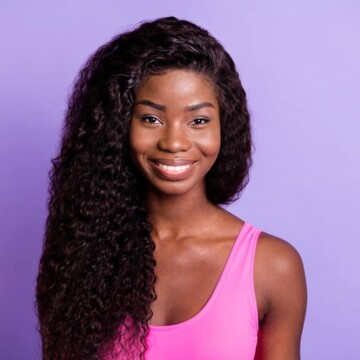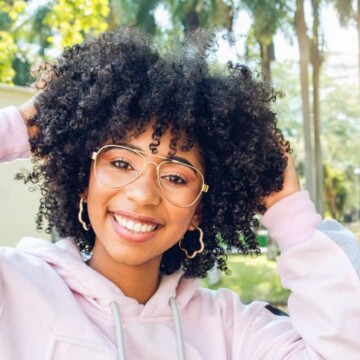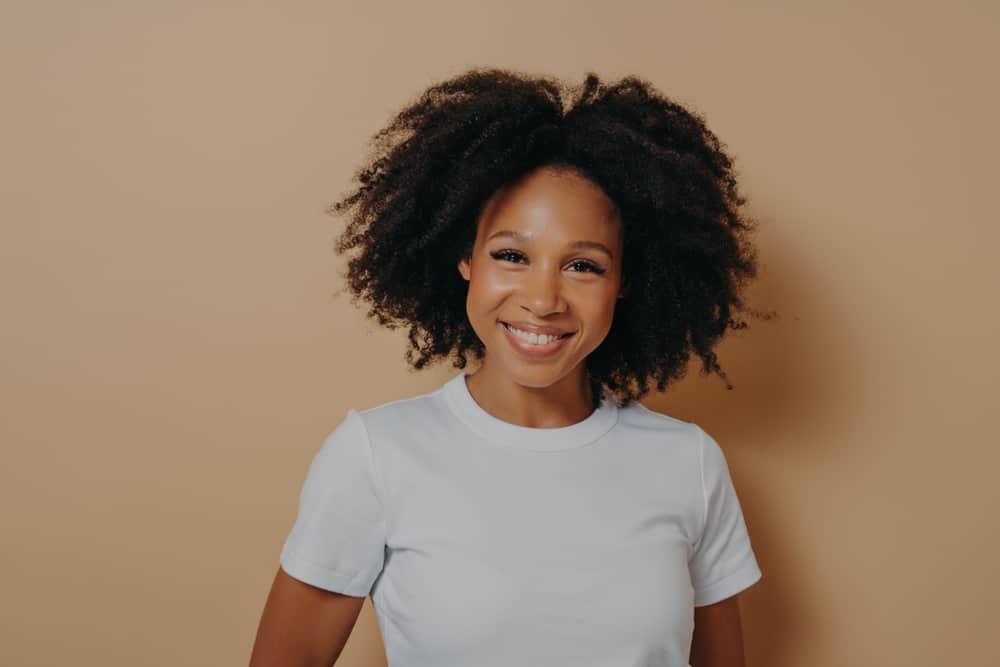
Unless you’re going for a mid-20th century-inspired look, flicked-out ends can easily drive you crazy. If you’re not ready or willing to embrace your hair flicking or curling outwards, this article will teach you what causes your hair to curl outwards and how to prevent those flicked-out ends.
You’ll soon be able to part with your curled ends for a more flattering look.
Table of Contents
- 1 Why Does My Hair Flick Out at the Ends?
- 2 Key Takeaways
- 2.1 Your Ends Are Split Causing Your Hair to Curl Outwards
- 2.2 Your Hair Is Reacting to the Climate
- 2.3 Your Hair Is Shoulder-Length
- 2.4 Your Styling Methods Are Problematic
- 2.5 You’re Going Through Hormonal Changes
- 2.6 Your Hair Is Overprocessed
- 2.7 You Heat Style Often
- 2.8 You Have Thin Ends
- 2.9 Your Nondominant Hand Is to Blame
- 3 9 Techniques to Prevent Flicked Out Ends
- 3.1 Grow out Your Hair to Prevent Flicked-out Ends
- 3.2 Chop Off Some Length
- 3.3 Opt for Some Layers
- 3.4 Try a Leave-in Conditioner
- 3.5 Reevaluate Your Product Stash
- 3.6 Cut Back on Heat Styling to Protect Your Hair Ends
- 3.7 Air Dry Your Hair
- 3.8 Apply a Hair Serum to Your Ends
- 3.9 Never Skip Your Heat Protectant
- 4 When to Contact a Professional
- 5 Frequently Asked Questions
- 5.1 Why Does My Hair Stick Up at the Ends?
- 5.2 How Do I Stop My Hair From Flipping Out at the Ends?
- 5.3 Why Does My Hair Flick Out on One Side?
- 5.4 Why Does Short Hair Flick Up?
- 5.5 At What Length Does Hair Stop Flipping Out?
- 5.6 Why Does My Layered Hair Flip Out?
- 5.7 Why Do the Ends of My Hair Curl Up After Cutting?
- 5.8 Related Articles
Why Does My Hair Flick Out at the Ends?
Your hair flicks out at the ends mainly because of split ends, shoulder-length hair rubbing against clothes, and changes in hair texture caused by the climate. Other key reasons include styling methods that stress hair strands, hormonal changes impacting hair behavior, overprocessing through chemicals or heat styling, and having thin ends that are more prone to curling.
Additionally, uneven styling due to the dominance of one hand can lead to asymmetrical flicking. Addressing these root causes is essential for managing and preventing flicked-out ends effectively.
Why Does My Hair Flip Up at the Ends? 9 Key Reasons
So, your hair is likely to flick out at the ends due to nine primary reasons:
- Your ends are split.
- Your hair is reacting to the climate.
- Your hair is shoulder-length and rubs against your clothes.
- Your styling methods are problematic.
- You’re going through hormonal changes.
- Your hair is overprocessed.
- You heat style often.
- You have thin ends.
- Your non-dominant hand is to blame for causing uneven styling.
The first step toward fixing flicked-out ends is to find out why it’s happening. You might be surprised to find out just how many factors contribute to this issue.Read on to learn more about the 9 common reasons why your tresses won’t stay put.
Key Takeaways
- Common Causes of Hair Flicking Out. Split ends, climate reactions, and problematic styling methods are often reasons. Climate reactions, especially in humid or dry climates, can contribute to hair damage. Shoulder-length hair can also be prone to damage, especially the ends of hair strands. Additionally, misusing hot tools or curling wands can cause further damage. These factors are common causes of your hair flicking out.
- Impact of Hair Type and Health. Curly and wavy hair, mainly when it's dry or frizzy, is more prone to flicking out. Healthy hair care practices, such as using hair masks and avoiding heat damage, are crucial. These practices allow you to maintain your hair's natural shape and texture.
- Role of Hormonal Changes. Hormonal fluctuations during menstruation, menopause, or pregnancy can affect hair texture and growth. These hormonal changes lead to sudden changes in how your hair behaves. Consequently, hormones can lead to the ends of your hair flipping out.
- Effective Prevention Techniques. (1) Grow longer hair to alter your hair's weight distribution. (2) Use hair care products suitable for your hair type, like shea butter or hair oil for dry hair. (3) Minimize heat styling.
- Professional Advice for Stubborn Cases. If simple at-home strategies fail, seek professional help. You might need a keratin treatment or a new haircut. A professional can address the root cause, especially for those with thick or curly hair.
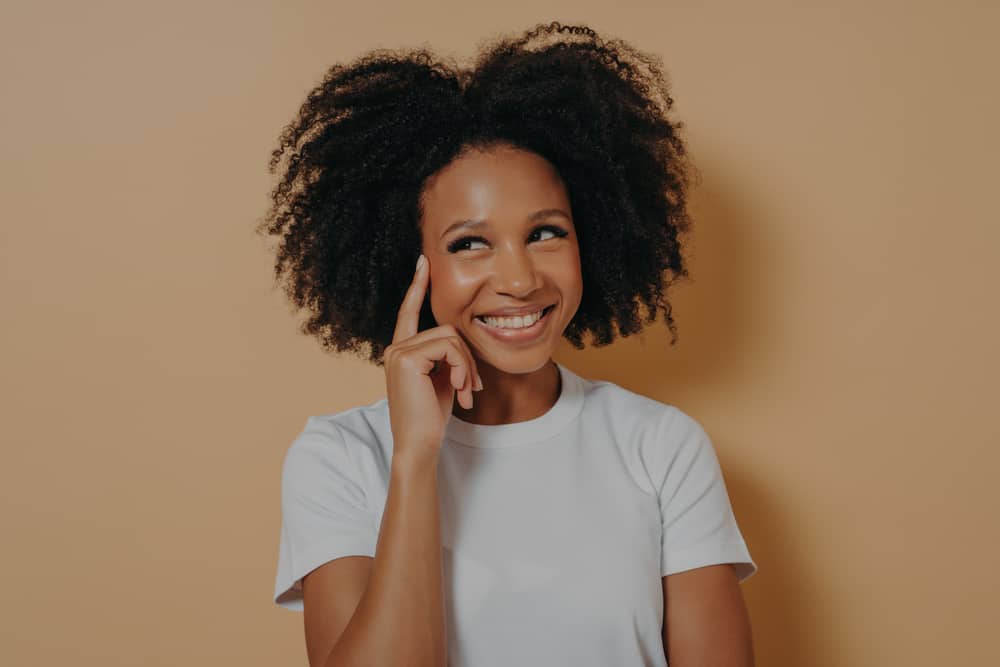
Your Ends Are Split Causing Your Hair to Curl Outwards
Less-than-healthy split-ends can be fickle, preferring to go their own way rather than cooperating. This makes split-ends naturally resistant to styling. Curly tresses are more likely to flick out as compared to other hair types, being that they’re naturally textured, dry, and easily damaged.
Your Hair Is Reacting to the Climate
Your hair might be sensitive to the climate if you’ve noticed your ends start curling upward as the weather changes. For some, this means that humidity will cause their ends to flip. Excessive heat may be the catalyst for others.
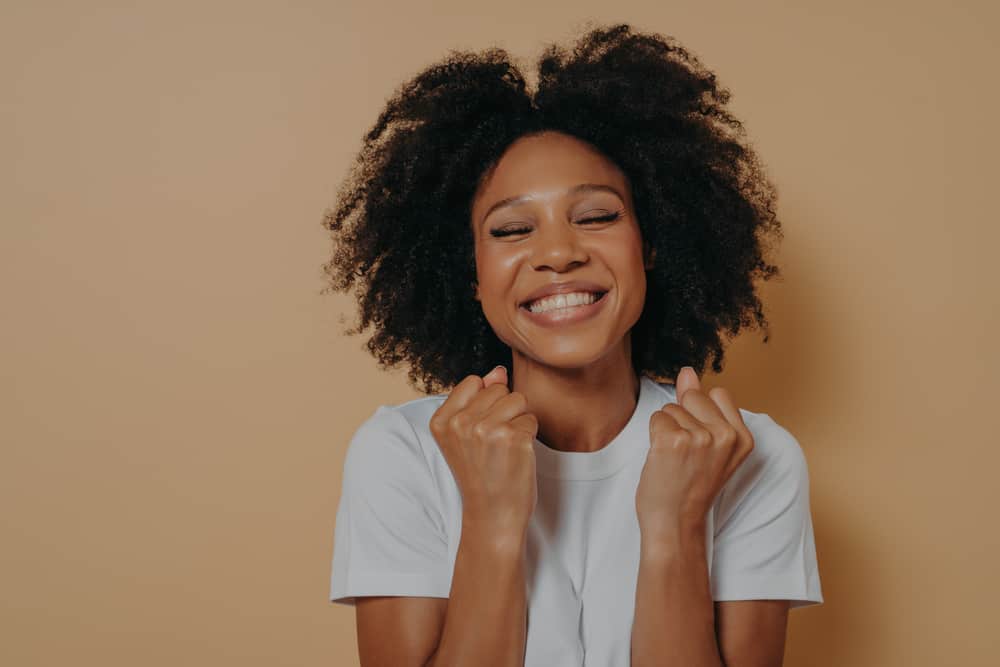
Your Hair Is Shoulder-Length
Hair that hits right at the shoulders has a higher chance of flipping than longer or shorter hair. As you go about your days and your hair comes in contact with your shoulders and neck, the ends will gradually curl upward at the ends.
Your Styling Methods Are Problematic
The way you style your hair directly affects how it will lay. For instance, you could unintentionally flip out your hair with a round brush or by holding your flat iron at the wrong angle.
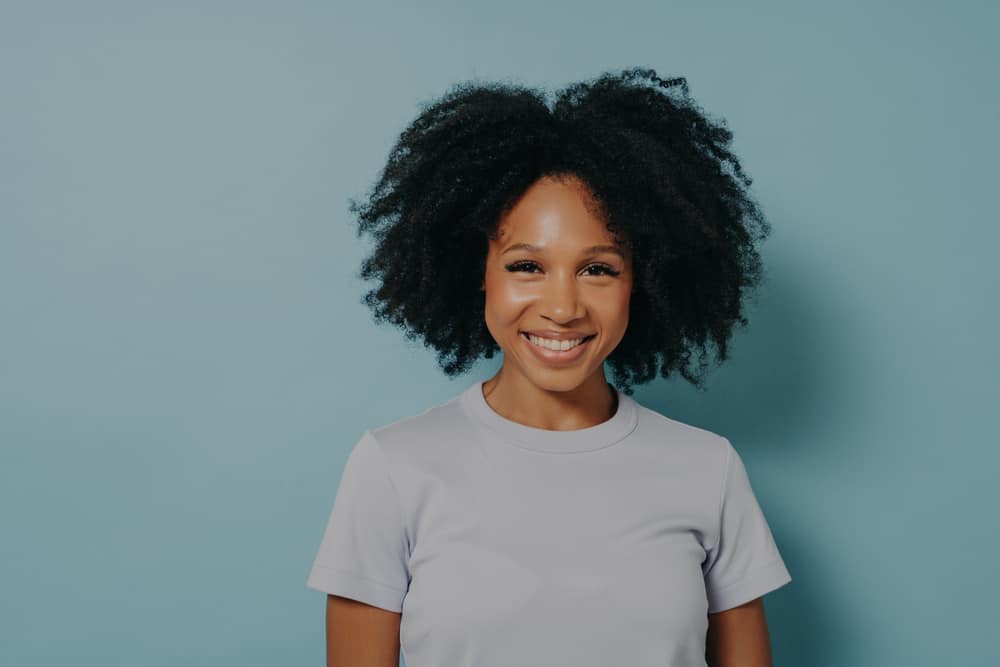
You’re Going Through Hormonal Changes
Hormonal changes are also to blame for flicked ends and unruly hair.
Menstruation
Depending on the time of the month, you could be in line for more bad hair days. During menstruation, hormonal variations can increase sebum production, resulting in oily hair.
Women who don’t consider Aunt Flow (and other potential hormonal imbalances) when styling their strands might be perplexed as to why their locks are suddenly becoming problematic.
Menopause
A woman's hair texture also changes during menopause, and this can begin as early as her thirties, though it's more common between forty and fifty-eight.
The hair will become more sensitive to heat styling, making it an easy target for damage. Unruly locks are not uncommon during this transition.
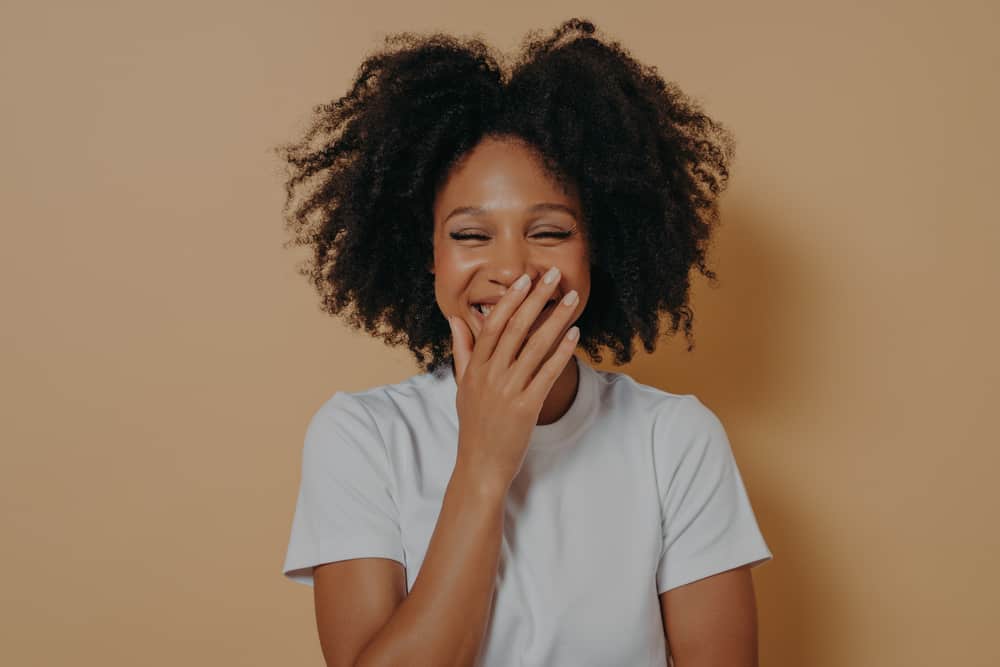
Pregnancy
Limp hair is one of the adverse effects of pregnancy, resulting in floppy strands that tend to lay in strange patterns. While this change isn’t permanent, it can make styling more challenging.
Your Hair Is Overprocessed
Coloring products used at home are often overly harsh and cause hair damage. Hair relaxers and perms also hurt your tresses and make them more prone to random curling. Even using too many products – or the wrong products – can contribute to flipped hair.
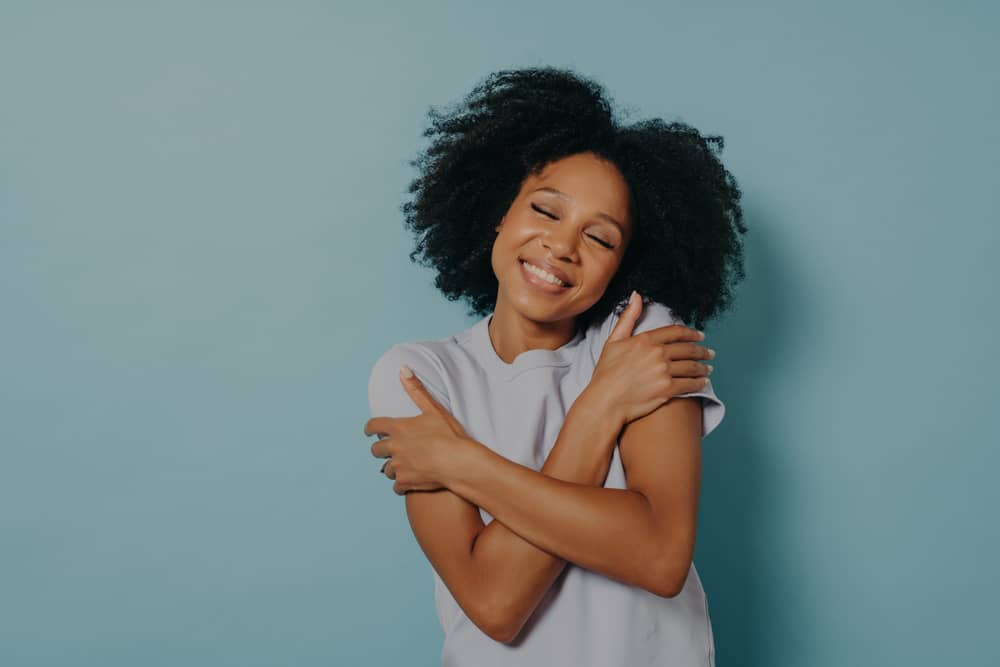
You Heat Style Often
Damaged hair is the most likely to flip, and few things wreak havoc on your strands as heat styling does. Experiencing dry, brittle hair that refuses to cooperate? Your favorite straightener or curling iron might be to blame.
You Have Thin Ends
Hair ends may flare due to their wispy nature. And because they are the thinnest, they are often the most difficult to control. The more damaged your hair is, the higher the probability that thin ends are to blame for that flicked-out look.
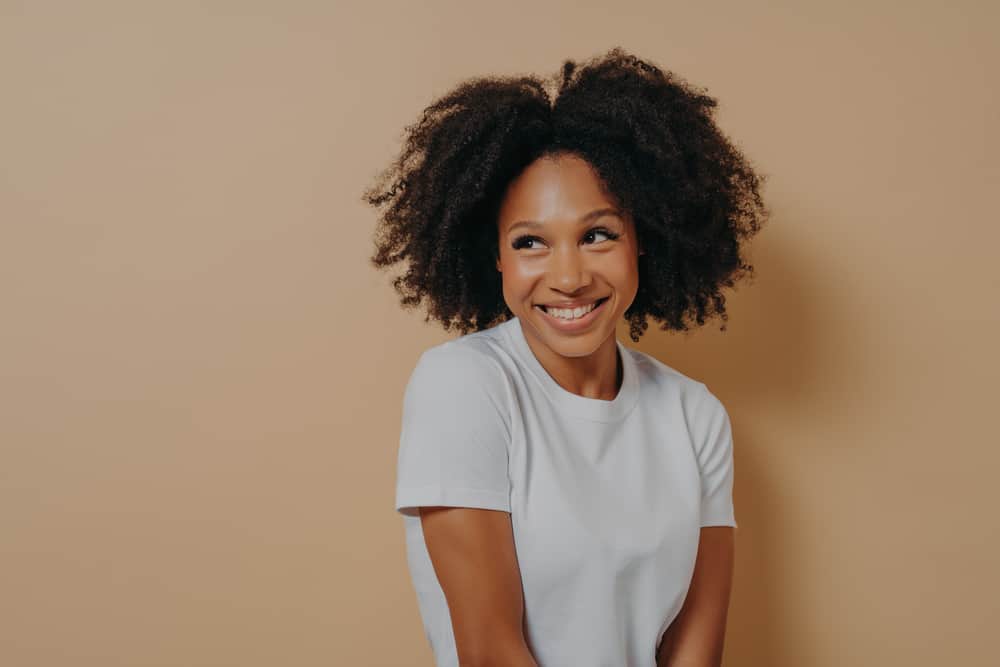
Your Nondominant Hand Is to Blame
Many women overlook how their nondominant hand styles their dominant side.
Because styling with your dominant hand is easier, one side of your head could be getting preferential care. It may be a minor distinction, but it could explain why a part of your hair doesn’t curl or lie properly.
9 Techniques to Prevent Flicked Out Ends
The following solutions will help you avoid flipped ends for good. Keep in mind that because the causes vary, different techniques may be required for different people and situations. Use one or more of these techniques to keep your hair flip-free!
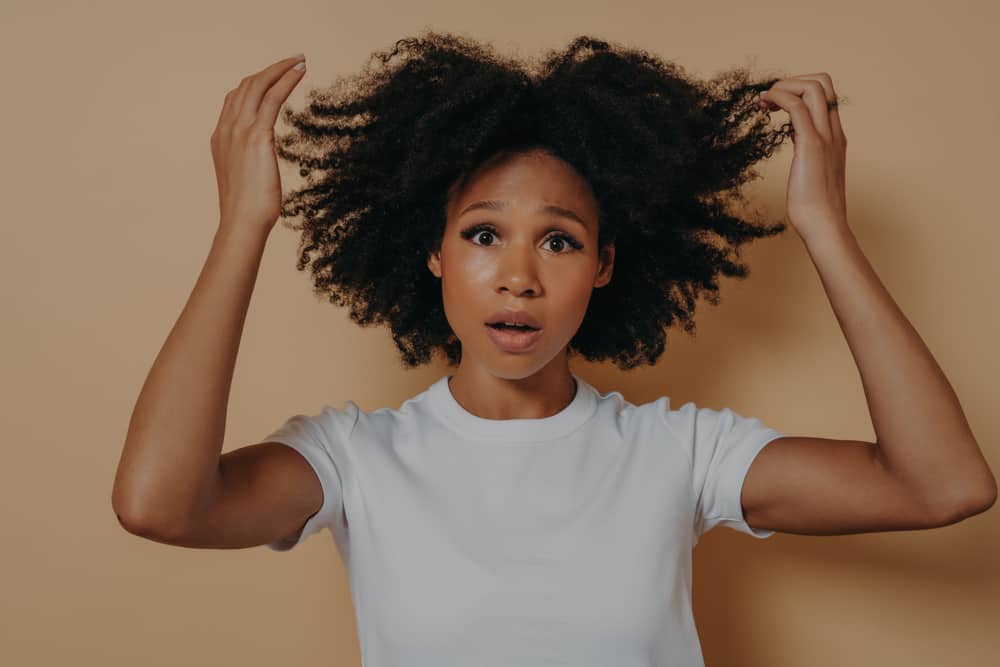
Grow out Your Hair to Prevent Flicked-out Ends
Ready to put flicked ends behind you? Grow your hair past your shoulders to avoid them altogether. Unruly ends are often straightened out by the weight distribution of longer locks. And even if a few flips do appear, they will be less obvious with long hair.
Chop Off Some Length
If you don’t want long tresses, a shorter style might be more appealing. The idea is to steer clear of the shoulders so that your ends don’t bend. A stylish bob or a cute pixie cut could do the trick.
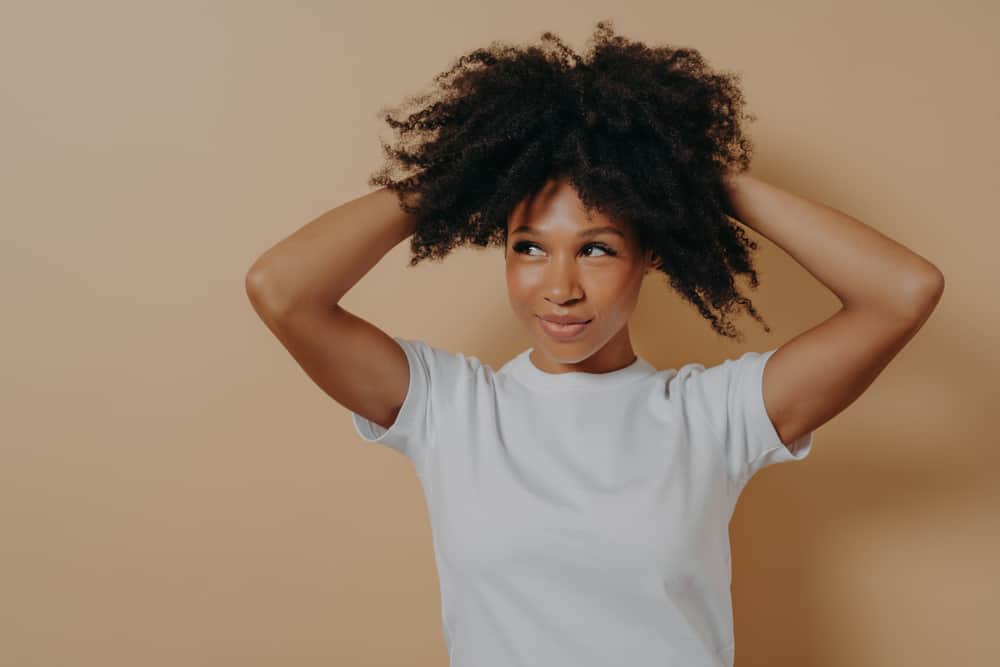
Opt for Some Layers
Layers can work with your natural curls or waves instead of fighting against them. It’s a clever way to incorporate flippy ends into your look. You can do this with both long and short hair.
Try a Leave-in Conditioner
Another way to tame your locks is to use a leave-in conditioner. This method will make your hair heavier and less prone to flipped ends.
Choose one that complements your natural hair type: for fine hair, go with a lightweight leave-in – for coarse hair, go with a mid to heavyweight leave-in.
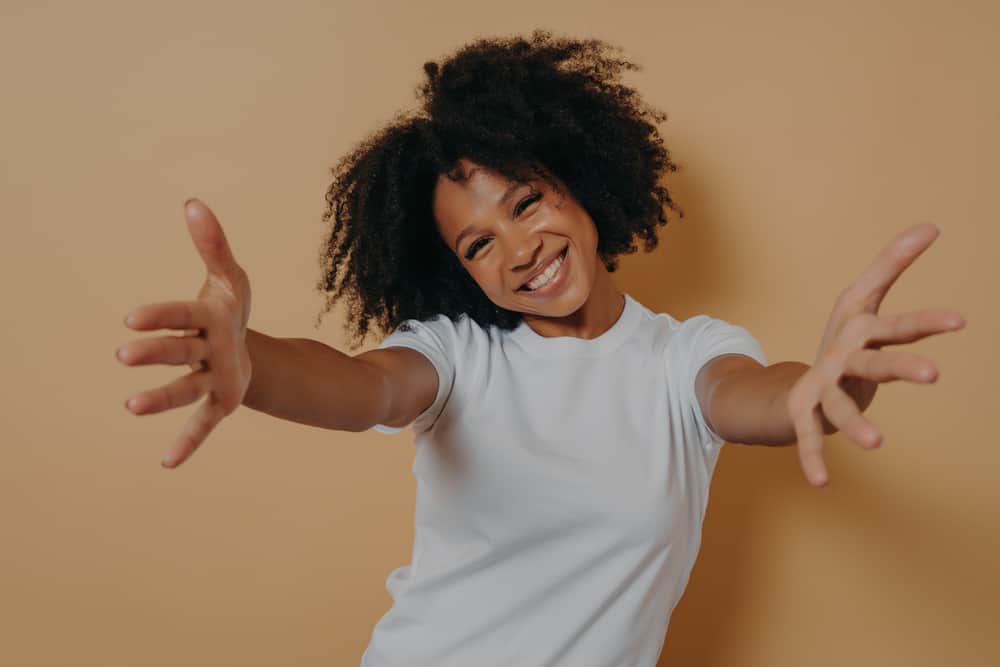
Reevaluate Your Product Stash
Examine the products you currently use to see if they are appropriate for your natural hair type. This small change can make a big difference in your hair’s health. Any products that dry your hair out or make it difficult to style should be thrown out.
Cut Back on Heat Styling to Protect Your Hair Ends
While your favorite straightener may improve flicked-out ends temporarily, it is bound to cause long-term harm. If you use it often, even on the lowest setting, it might cause brittle hair.
So, save the straightener for special occasions and opt for healthier everyday styling solutions. We encourage you to opt for styles like twist-outs and braid-outs in between heat styling sessions to minimize how much heat you’re using on your hair.
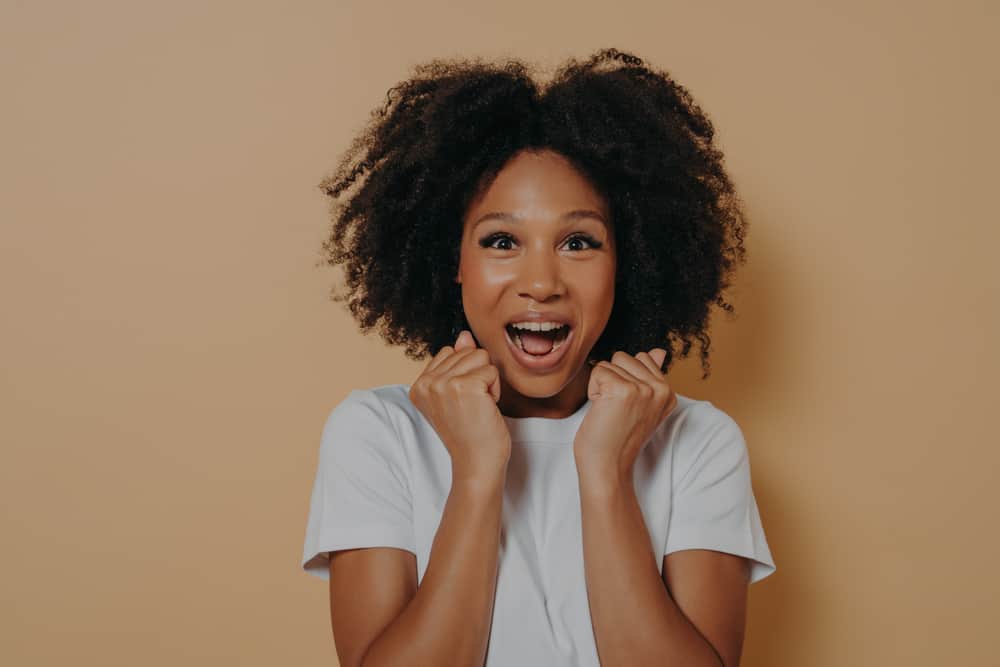
Air Dry Your Hair
Skip the blow dryer and allow your hair to air dry instead. Your locks will naturally fall into place and be less likely to flick out. In the long run, this will also make your hair softer and healthier.
Apply a Hair Serum to Your Ends
To prevent flippy ends, apply an oil-based serum to your strands. This will make them heavier while also protecting your locs from outside influences and moisture loss.
Choose a serum that contains natural ingredients that are beneficial to your hair, such as avocado oil and argan oil.
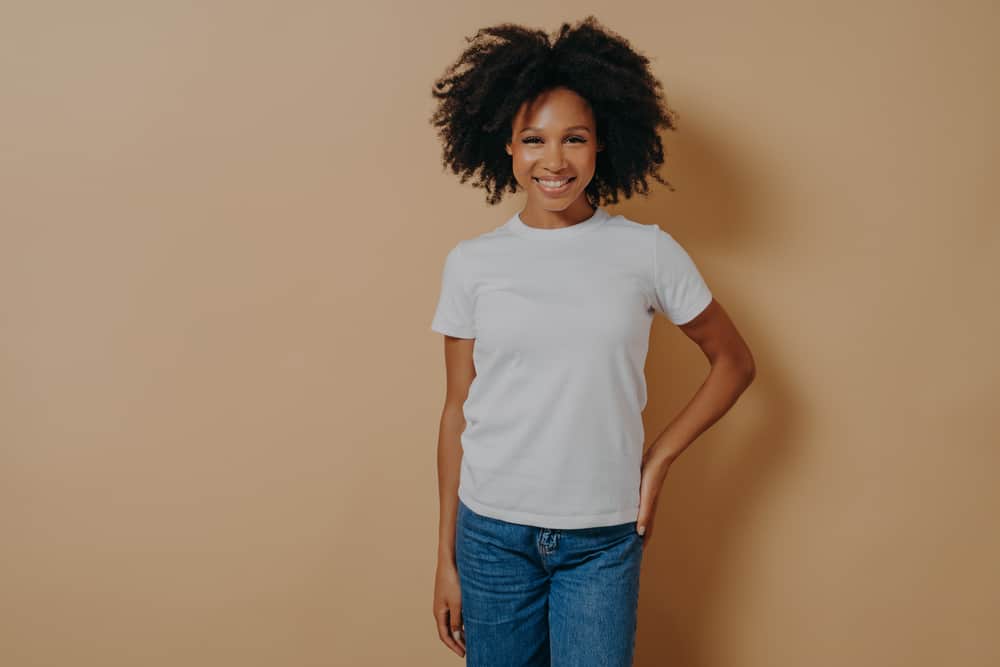
Never Skip Your Heat Protectant
Heat protectants ensure your strands are protected against heat styling and sun exposure. Include this highly-rated protectant spray in your regimen.
It’ll form a protective barrier between your hair, the elements, and styling equipment and promote stronger strands that are less likely to flip.
When to Contact a Professional
If none of the previous tips or techniques help you get rid of your flicked-out ends, it’s time to make an appointment with your local stylist.
They will do a consultation where they’ll examine your hair and give their expert opinion on how to get you out of this flippy situation. It can be a drag to go in to see a stylist, but it will be necessary in some cases.
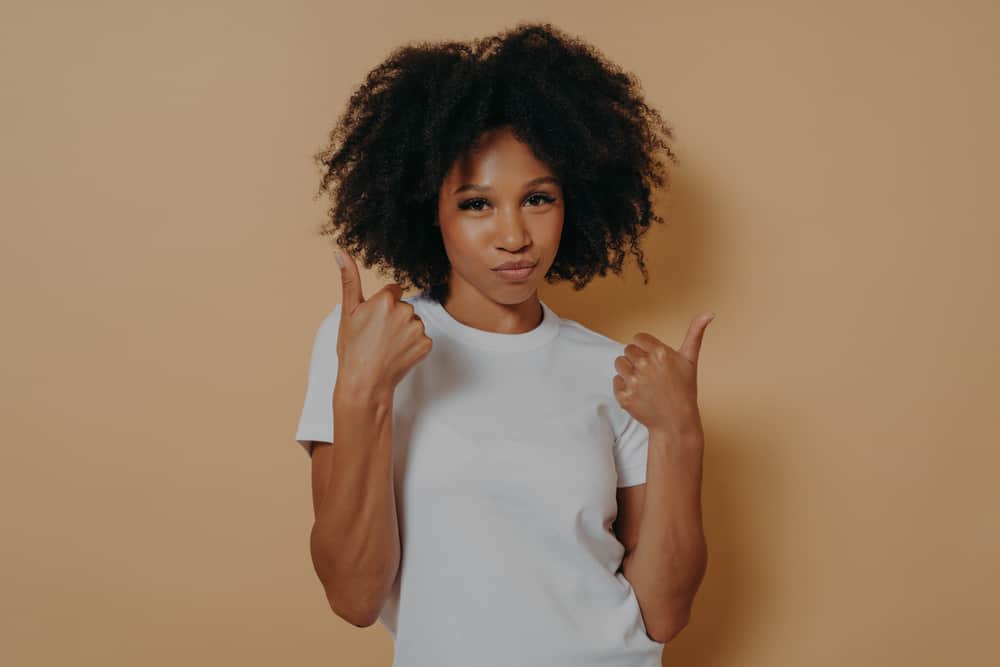
Frequently Asked Questions
Welcome to our FAQ section. Here, we answer common questions about why hair flicks out at the ends. We provide straightforward answers and insights to help you manage this hair concern.
Why Does My Hair Stick Up at the Ends?
Your hair sticks up at the ends, often due to damaged ends or a lack of natural oils. These issues can result from overusing heat-styling tools or chemical treatments. The hair shaft becomes brittle and loses its natural direction, causing the ends to stick up. Ensure proper hair care by using nourishing hair products. Also, minimizing heat exposure can help maintain the health of your hair follicles and prevent your hair from sticking up.
How Do I Stop My Hair From Flipping Out at the Ends?
Avoid excessive use of heat styling tools to prevent your hair from flipping out at the ends. Also, ensure your hair is adequately moisturized with hair oils or natural oils. Use a heat protectant spray when styling. Opting for haircuts suitable for your hair length and type can also help. Finally, regularly trim damaged ends and avoid harsh chemical treatments. All of these tactics are essential in preventing flicked-out ends.
Why Does My Hair Flick Out on One Side?
Your hair may flick out on one side due to uneven hair length, differences in texture, or styling habits favoring one side. Flicking out can also happen if one side is more exposed to heat styling or has suffered more damage. Balance the use of hair products and be with your styling techniques.
Why Does Short Hair Flick Up?
Short hair tends to flick up due to its lighter weight and lack of length, which can weigh it down. The natural curl or wave pattern might become more pronounced when hair is cut short. The natural pattern can cause the hair to flick upwards. Use suitable styling products, like hair gels or mousses, to manage and style short hair.
At What Length Does Hair Stop Flipping Out?
Hair typically stops flipping out at a length where the weight of the hair can naturally keep it down. This length varies depending on hair type and texture. Shoulder-length hair is less likely to flick outwards because it is heavier, and the weight is distributed evenly along each strand.
Why Does My Layered Hair Flip Out?
Layered hair may flip out because the different lengths create varying tensions on the hair shaft. These tensions are more pronounced in damp or frizzy hair types. The layers can cause hair to flick outwards at the ends, where the hair is lighter and less weighed down. To manage layered hair, use smoothing hair products and styling tools correctly. For loose curls, use a curling wand.
Why Do the Ends of My Hair Curl Up After Cutting?
The ends of your hair may curl up after cutting due to the release of tension from the strand, especially in naturally wavy or curly hair. The new haircut can also alter how your hair falls and interacts with environmental factors like humidity. Appropriate styling techniques and products can help manage the natural curling of hair after a cut.
However, chances are you won’t need to go see a professional to fix your flicked-out ends, as the strategies and tips outlined in this article are bound to bring you better hair days.
Try these strategies at home to find out which ones work best for you. Be gentle with your flipping ends and have patience. Remember, every head of hair is unique - just like you are!

